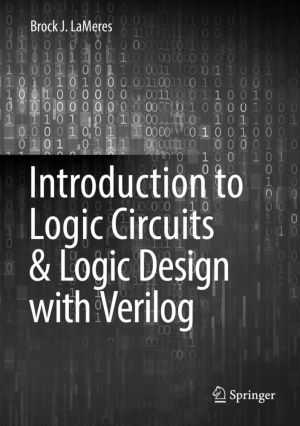Linux Appliance Design
A Hands-on Guide to Building Linux Appliances
by Bob Smith, John Hardin, Graham Phillips, Bill Pierce
DescriptionTable of ContentsDetailsHashtagsReport an issue
Linux Appliance Design shows how to build better appliances - appliances with more types of interfaces, more dynamic interfaces, and better debugged interfaces.
You'll learn how to build backend daemons, handle asynchronous events, and connect various user interfaces (including web, framebuffers, infrared control, SNMP, and front panels) to these processes for remote configuration and control. Linux Appliance Design also introduces the Run-Time Access library, which provides a uniform mechanism for user interfaces to communicate with daemons.
Learn to:
- Separate your user interfaces from your daemons
- Give user interfaces run time access to configuration, status, and statistics
- Add professional network management capabilities to your application
- Use SNMP and build a MIB
- Build a web-based appliance interface
- Build a command line interface (CLI)
- Build a framebuffer interface with an infrared control as input
- Manage logs and alarms on an appliance 






Book Description
Modern appliances are complex machines with processors, operating systems, and application software. While there are books that will tell you how to run Linux on embedded hardware, and books on how to build a Linux application, Linux Appliance Design is the first book to demonstrate how to merge the two and create a Linux appliance. You'll see for yourself why Linux is the embedded operating system of choice for low-cost development and a fast time to market.Linux Appliance Design shows how to build better appliances - appliances with more types of interfaces, more dynamic interfaces, and better debugged interfaces.
You'll learn how to build backend daemons, handle asynchronous events, and connect various user interfaces (including web, framebuffers, infrared control, SNMP, and front panels) to these processes for remote configuration and control. Linux Appliance Design also introduces the Run-Time Access library, which provides a uniform mechanism for user interfaces to communicate with daemons.
Learn to:
- Separate your user interfaces from your daemons
- Give user interfaces run time access to configuration, status, and statistics
- Add professional network management capabilities to your application
- Use SNMP and build a MIB
- Build a web-based appliance interface
- Build a command line interface (CLI)
- Build a framebuffer interface with an infrared control as input
- Manage logs and alarms on an appliance
This open book is licensed under a Creative Commons License (CC BY). You can download Linux Appliance Design ebook for free in PDF format (12.1 MB).
Table of Contents
Chapter 1
Appliance Architecture
Chapter 2
Managing Daemons
Chapter 3
Using Run-Time Access
Chapter 4
Building and Securing Daemons
Chapter 5
The Laddie Alarm System: A Sample Appliance
Chapter 6
Logging
Chapter 7
Laddie Event Handling
Chapter 8
Designing a Web Interface
Chapter 9
Designing a Command Line Interface
Chapter 10
Designing a Front Panel Interface
Chapter 11
Designing a Framebuffer Interface
Chapter 12
Infared Remote Control
Chapter 13
Hands-On Introduction to SNMP
Chapter 14
Designing Your SNMP MIB
Chapter 15
Implementing Your SNMP MIB
Book Details
Title
Linux Appliance Design
Subject
Computer Science
Publisher
No Starch Press
Published
2007
Pages
388
Edition
1
Language
English
ISBN13 Digital
9781593271404
ISBN10 Digital
1593271409
PDF Size
12.1 MB
License

Related Books

This book is designed to introduce you to writing programs with the Go programming language. You'll learn how to write useful tools and applications that can run on remote servers, or local Windows, macOS, and Linux systems for development.
The topics that it covers include how to:
- Install and set up a local Go development environment on...

This book addresses the issue of diffusing sustainable energy access inlow- and middle-income contexts.
Access to energy is one of the greatest challenges for many people living in low-income and developing contexts, as around 1.4 billion people lack access to electricity.Distributed Renewable Energy systems (DRE) are considered a promising approa...

Digital Transformation of the Design, Construction and Management Processes of the Built Environment
This open access book focuses on the development of methods, interoperable and integrated ICT tools, and survey techniques for optimal management of the building process. The construction sector is facing an increasing demand for major innovations in terms of digital dematerialization and technologies such as the Internet of Things, big data, advan...

This book for courses in Digital Systems Design introduces students to the fundamental hardware used in modern computers. Coverage includes both the classical approach to digital system design (i.e., pen and paper) in addition to the modern hardware description language (HDL) design approach (computer-based). Using this textbook enables readers to ...

This book for courses in Digital Systems Design introduces students to the fundamental hardware used in modern computers. Coverage includes both the classical approach to digital system design (i.e., pen and paper) in addition to the modern hardware description language (HDL) design approach (computer-based). Using this textbook enables readers to ...

This textbook introduces readers to the fundamental hardware used in modern computers. The only pre-requisite is algebra, so it can be taken by college freshman or sophomore students or even used in Advanced Placement courses in high school. This book presents both the classical approach to digital system design (i.e., pen and paper) in addition ...

